44 label the regions of the body
Nine Regions of the Abdomen: Medical Terms - Study.com The abdomen houses the digestive organs, making it a vital part of the body. Learn about the nine regions of the abdomen, explore the applicable medical terms, and map the abdomen's hypochondrium,... Male Reproductive Organs and Functions: 7 Parts - eMedicineHealth The body of the penis consists of three cylindrical spaces of soft tissue. When the two larger spaces fill with blood, the penis becomes large and rigid, forming an erection. Two larger cylindrical spaces of soft tissue called the corpora cavernosa are located side by side and form the bulk of the penis. The third cylindrical space of soft ...
Learn the regions of the body with quizzes and diagrams - Kenhub Regions of the body are essentially ways of compartmentalizing the body to make it easier to learn. Broadly speaking, the body can be split into two primary regions: the axial, and the appendicular. However, within these two regions are several sub-regions. And within those sub-regions, are even more sub-regions. Agh!

Label the regions of the body
The Skin: 7 Most Important Layers, Functions & Thickness There are seven layers of skin and each layer serves different functions. The skin is the largest organ in the body and it covers the body's entire external surface. It is made up of seven layers ( [starting from the top layer down to the bottom [deepest] layer): Stratum corneum Stratum lucidum Stratum granulosum Stratum spinosum Stratum basale The 4 Abdominal Quadrants: Regions & Organs - Study.com As you can see in the diagram, the four abdominal quadrants are located in the space directly below the diaphragm. These regions are named by their location: The Right Upper Quadrant, or RUQ The... (Get Answer) - "Label The Body Regions : Fill In The Table Below The ... "Label The Body Regions : Fill In The Table Below The Diagram I II 8 9 Describe The Body Region Each Of These Terms Refer To: 1. Abdominal 2. Acromial 3. Antebrachial 4. Brachial 5. Buccal 6. Carpal 7. Celiac 8. Cephalic 9. Cervical 10. Costal 11. Coxal 12. Digital 13. Dorsal 14. Femoral 15. Frontal...
Label the regions of the body. 1.2: Anatomical Position and Planes - Biology LibreTexts Using your knowledge of the different body planes shown in Figure 1-2 (shown again below), fill in the blanks with the appropriate body plane for each of the following descriptions. 1. The plane that divides the body into anterior and posterior parts is the plane. 2. A transverse plane divides the body into and regions. 3. Body Cavities and Membranes: Labeled Diagram, Definitions Body Cavities Labeled Diagram: There are 2 main cavities in the body, the dorsal cavity and the ventral cavity. We know from the anatomical directional terms lecture that anterior means front or toward the front of the body, and posterior means back or toward the back of the body. Anatomical Terms & Meaning: Anatomy Regions, Planes, Areas, Directions The regions are named below and the corresponding regions are labeled 1-9. Abdominal Regions Right (1) and left (3) hypochondriac regions - on either side of the epigastric region. Contains the diaphragm, some of the kidneys, right side of the liver, the spleen and part of the pancreas. Anatomy, Appendicular Skeleton - StatPearls - NCBI Bookshelf The appendicular skeleton is one of two major bone groups in the body, the other being the axial skeleton. The appendicular skeleton is comprised of the upper and lower extremities, which include the shoulder girdle and pelvis. The shoulder girdle and pelvis provide connection points between the appendicular skeleton and the axial skeleton to where mechanical loads transfer. Of the 206 bones ...
Organs of the body | Their Locations and Internal Functions It is considered the biggest organ in the human body. It weighs around 2 to 3 kg making it the heaviest internal organ in a healthy adult. It is located on the right side of the body above the stomach, as seen in the image above. It is an essential organ of metabolism and one of the principal organs in the human body that detoxifies substances. General Anatomy and Physiology of a Human: TEAS Anatomy: The study of the parts and structures of the human body. Physiology: The study of the functions of the human body. Gross anatomy: The study of the parts and structures of the human body that can be seen with the naked eye and without the use of a microscope. Microscopic anatomy: The study of the parts and structures of the human body ... 10.5: Human Body Cavities - Biology LibreTexts The dorsal cavity is at the posterior, or back, of the body, including both the head and the back of the trunk. The dorsal cavity is subdivided into the cranial and spinal cavities. The cranial cavity fills most of the upper part of the skull and contains the brain. The spinal cavity is a very long, narrow cavity inside the vertebral column. Clavicle - Definition, Location, Anatomy, & Labeled Diagram Clavicle, commonly known as collarbone, is a slender, S-shaped, modified long bone located at the base of the neck. It is the only long bone of the body that lies horizontally. The term clavicle comes from the Latin word ' clavicula ', meaning 'little key', as its shape resembles an old-fashioned key. Also, the bone rotates along its ...
Skin Anatomy: The Layers of Skin and Their Functions The dermis is the middle layer of the skin. It contains connective tissue, capillaries, nerve endings, and hair follicles. It also contains different glands, including sebaceous glands that produce sebum (a body oil) and apocrine glands that produce sweat. The dermis is split into two parts: 4 FREE Human Body Systems Labeling with Answer Sheets The free skeletal system labeling sheet includes a fill-in-the-blanks labeling of the main bones on the body. The free respiratory system labeling sheet includes a blank diagram to fill in the trachea, bronchi, lungs, and larynx. The free nervous system labeling sheet includes blanks to label parts of the brain, spinal cord, ganglion, and nerves. Anatomical Planes of Body | What Are They?, Types & Position In Body contains the right side of body organs such as liver, right kidney, gallbladder, duodenum, pancreas, a small portion of the stomach, and parts of the small intestine. Left Upper Quadrant The left upper quadrant consists of the left kidney, spleen portion of descending and transverse colon, stomach part, and parts of the small intestine. Pain in the Muscular System - Muscles of the Human Body - Innerbody The gluteal region contains three muscles differentiated by size—the gluteus maximus (large), gluteus medius (medium), and gluteus minimus (smallest). Finally, the direction in which the muscle fibers run can be used to identify a muscle. In the abdominal region, there are several sets of wide, flat muscles.
Anatomical Position: Body Planes and Sections - EZmed Standard Anatomical Position: Standing upright, head and eyes directed straight ahead, arms at the sides, palms facing forward, thumbs pointing away from the body, legs together, and feet flat on the ground facing forward. Body Planes and Sections Now that we understand the anatomical position, let's talk about the different planes of the body.
Labeled atlas of anatomy: illustrations of the dog - IMAIOS Cranial abdominal region Cranial mesenteric artery Cranial region of the stifle Cranial thoracic aperture Cranial vena cava Cranium Cranium Cubital region Deep femoral artery Deltoid muscle Descending pectorral muscle (Superficial pectoral muscles) Descending portion of the duodenum Digastric muscle Digital bones of pes Digital bones of the hand
Female Body Diagram: Parts of a Vagina, Location, Function Uterus: The uterus is located in the lower pelvis (belly area between the hips), through the vagina just past the cervix. Often called a womb, it's where a baby lives during pregnancy. Interestingly, it has three layers of muscle and is one of the strongest muscles in the body. 1
Parts The Label Body An Of Insect the head is one of the main three body regions of an insect. Label and color Label and color. Insects: Insects can also fly or crawl into the ear canal The body of an insect must 'molt' or shed it's skin in an effort to grow Metabolic wastes and cell remnants are then moved towards the bloodstream and processed before being expelled or excreted ...
Trunk Region (Torso) < Regional Anatomy << Human Anatomy <<< Body ... Breasts In our body's trunk region, the paired Mammary Region (Breasts), in the front of the chest encompassing each breast and housing the mammary glands, composed mainly of skin, muscles, fat (adipose tissue), breast tissue and connective tissue, nerves, veins, and arteries. In and on our body's chest, each Breast contains 15 to 20 lobes arranged in a circular fashion.
Body Regions Quiz - ProProfs I wish you well and GOOD LUCK in learning these basic concepts in human anatomy and physiology! Let us go for it! Questions and Answers 1. What body region is represented by the number 7? A. Sural B. Calcaneal C. Oral D. Otic E. Palmar 2. What is the letter M representing in body regions? A. Tarsal B. Carpal C. Occipital D. Nasal E. Navel 3.
Anatomy, Head and Neck, Anterior Cervical Region - StatPearls - NCBI ... Most importantly, circulation and lymphatics unify in proximity to the anterior cervical region. The entire body drains into the thoracic duct, and that drains into the left internal jugular and subclavian veins. However, the head and neck, right upper limb, and hemithorax all drain lymphatics into the right lymphatic duct and then into the ...
Antibody- Structure, Classes and Functions - Microbiology Info.com Antibody- Structure, Classes and Functions. Antibody (Ab) also know as Immunoglobulin (Ig) is the large Y shaped protein produced by the body's immune system when it detects harmful substances, called antigens like bacteria and viruses. The production of antibodies is a major function of the immune system and is carried out by a type of white ...
1.4F: Abdominopelvic Regions - Medicine LibreTexts Most organs are part of multiple regions, including the gallbladder, duodenum, stomach, kidneys, spleen, small intestine and colon. The perineum (the area beneath the hypogastric region at the bottom of the pelvic cavity) is sometimes considered to be a tenth division in this system. Right Hypochondriac
Cow Anatomy - External Body Parts and Internal Organs with Labeled ... Different parts from the neck region of a cow - here, you will find the neck crest, dewlap, brisket, and jugular groove. The external parts from the body or barrel of a cow - in this region, you will find many external features. The most important features are - hump, wither, loin, rump, pin bone, heart girth, flank, and others.
Body Regions: Anatomy Quiz! - ProProfs The body is divided into two portions: axial and appendicular. It is like reading a map in which certain items are found in certain regions. This quiz will be a region of success when you pass this quiz. Questions and Answers 1. Head and Face 2. Head 3. Face 4. Nose 5. Cheek 6. Eye 7. Mouth 8. Chin 9. Forehead 10. Crown 11. Side of Head 12. Ear 13.
(Get Answer) - "Label The Body Regions : Fill In The Table Below The ... "Label The Body Regions : Fill In The Table Below The Diagram I II 8 9 Describe The Body Region Each Of These Terms Refer To: 1. Abdominal 2. Acromial 3. Antebrachial 4. Brachial 5. Buccal 6. Carpal 7. Celiac 8. Cephalic 9. Cervical 10. Costal 11. Coxal 12. Digital 13. Dorsal 14. Femoral 15. Frontal...
The 4 Abdominal Quadrants: Regions & Organs - Study.com As you can see in the diagram, the four abdominal quadrants are located in the space directly below the diaphragm. These regions are named by their location: The Right Upper Quadrant, or RUQ The...
The Skin: 7 Most Important Layers, Functions & Thickness There are seven layers of skin and each layer serves different functions. The skin is the largest organ in the body and it covers the body's entire external surface. It is made up of seven layers ( [starting from the top layer down to the bottom [deepest] layer): Stratum corneum Stratum lucidum Stratum granulosum Stratum spinosum Stratum basale



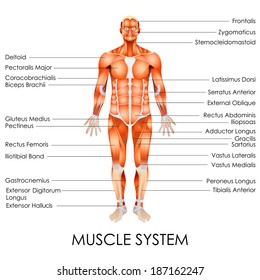


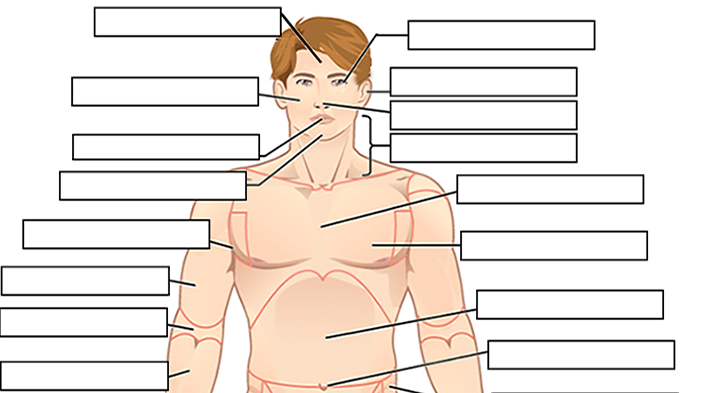
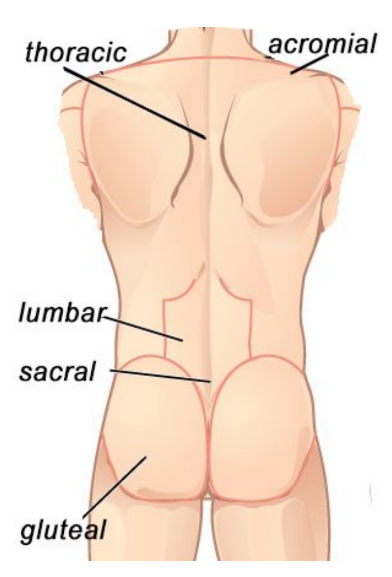

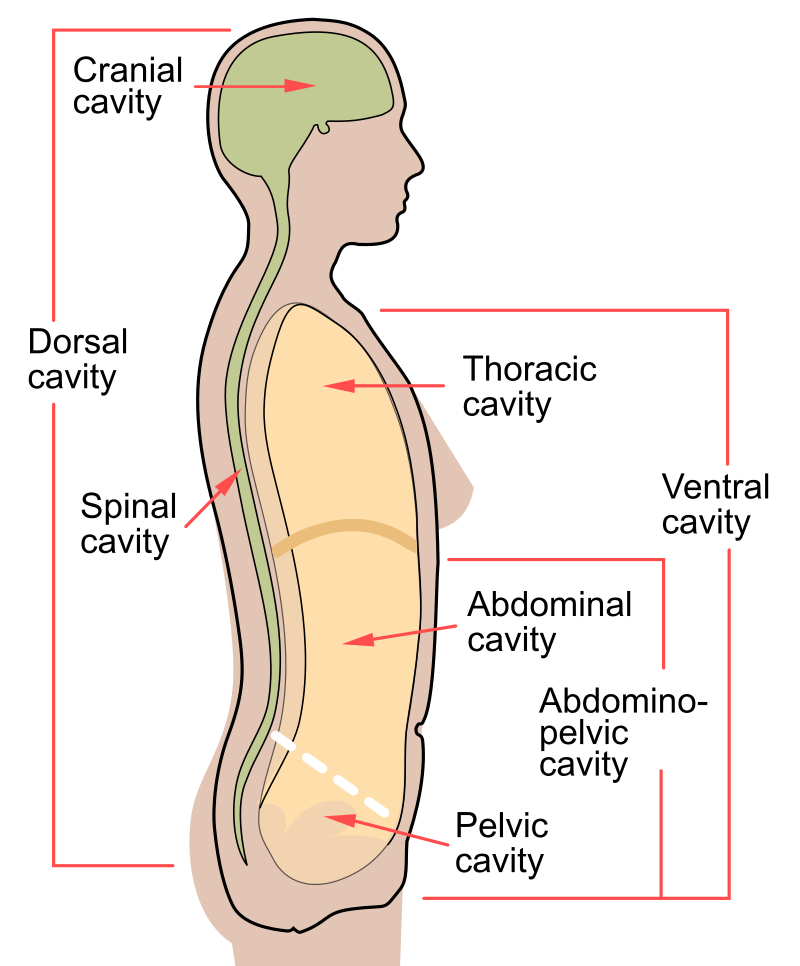
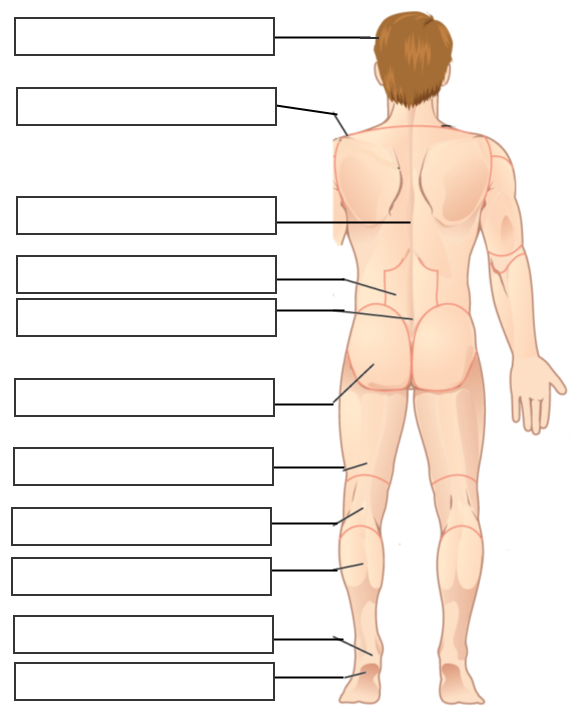


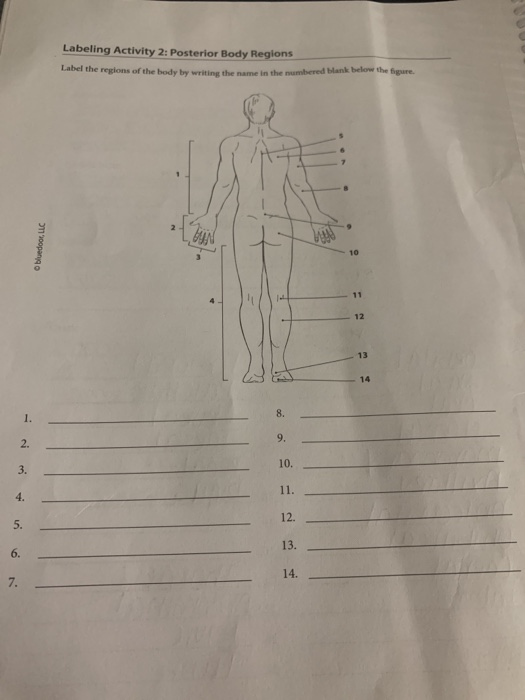
:background_color(FFFFFF):format(jpeg)/images/library/11276/labeled_diagram_regions_of_the_upper_limb.jpg.jpg)
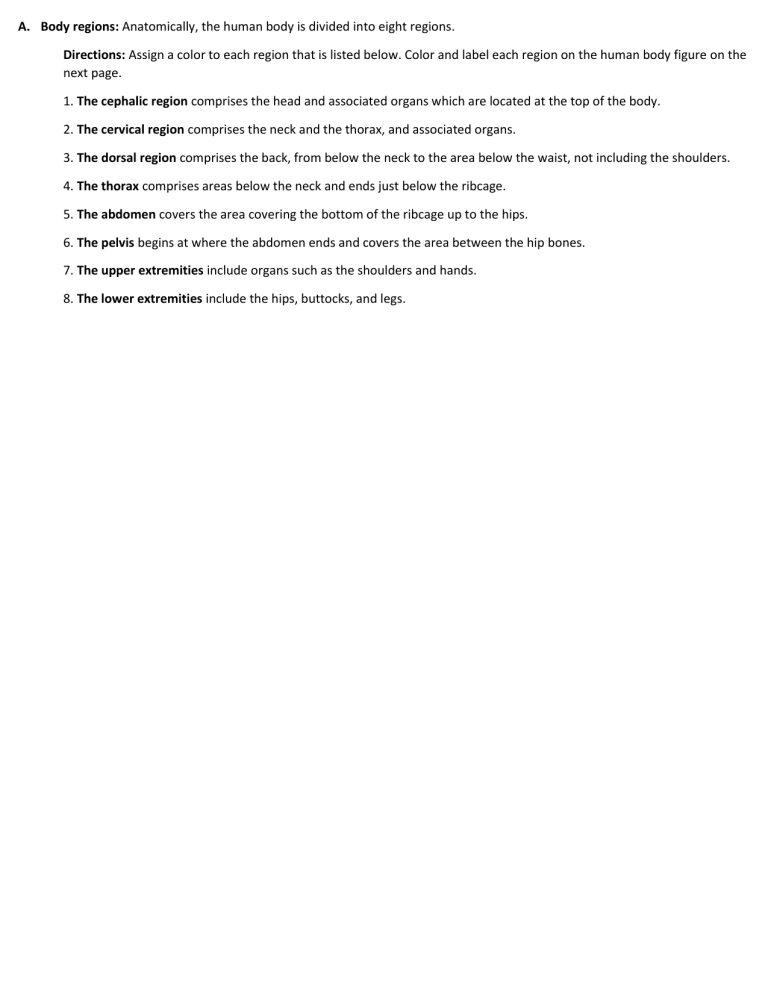

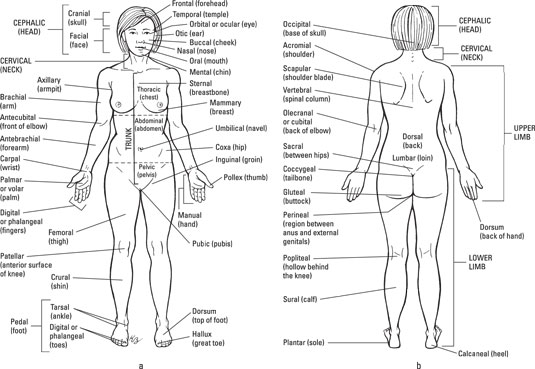




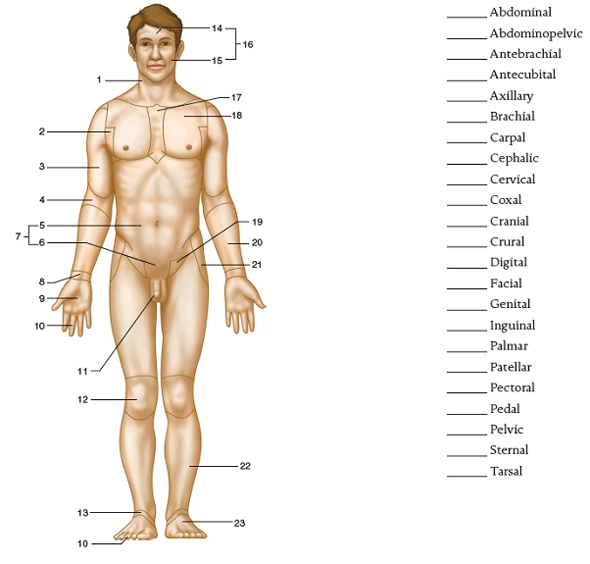


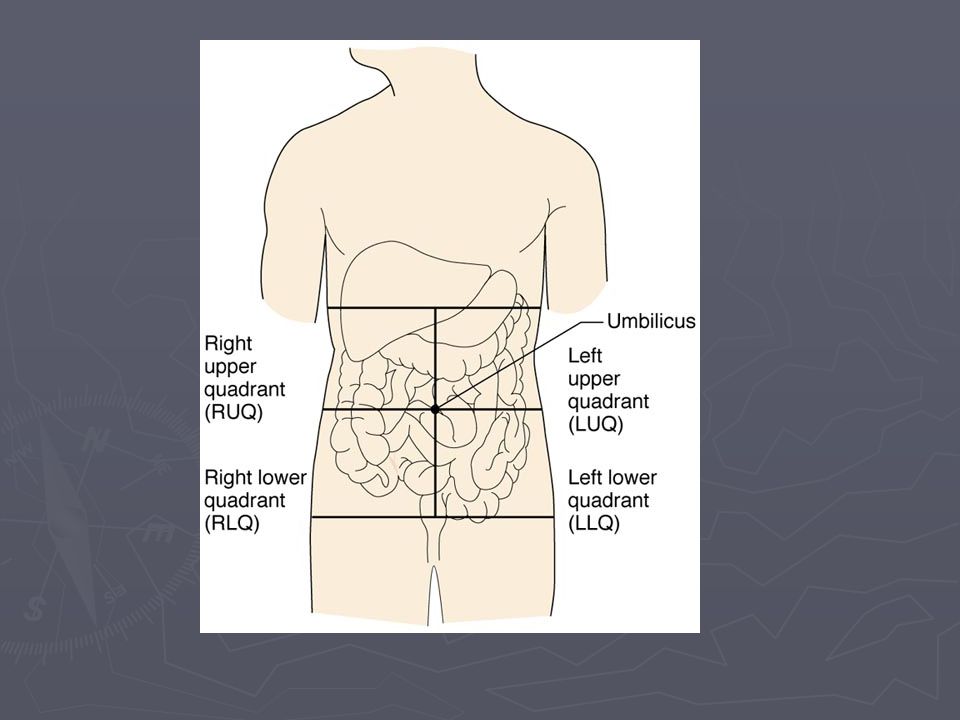

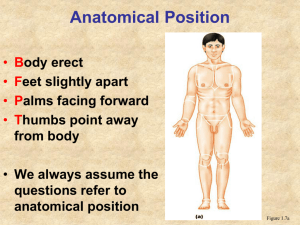




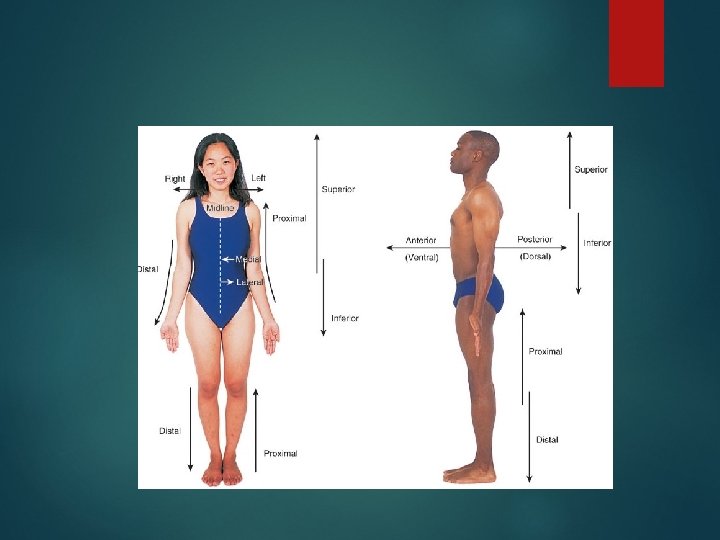

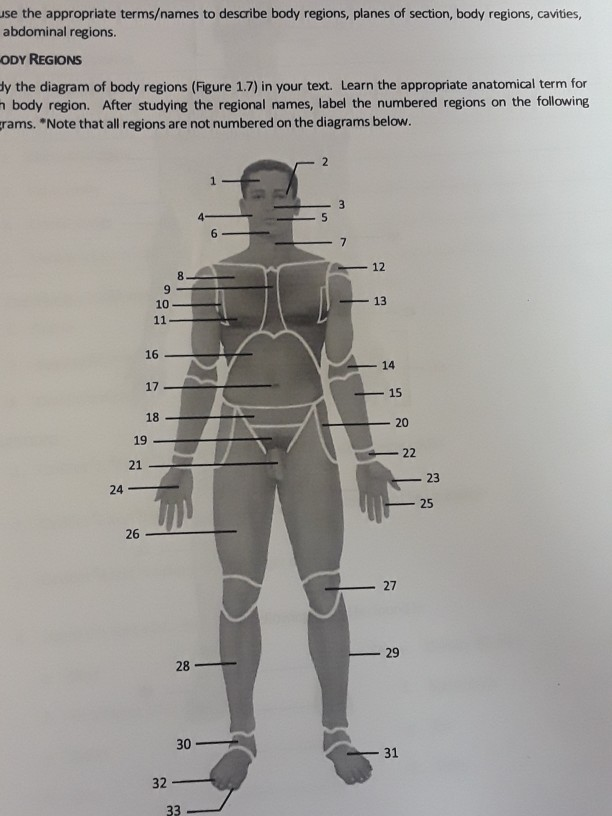



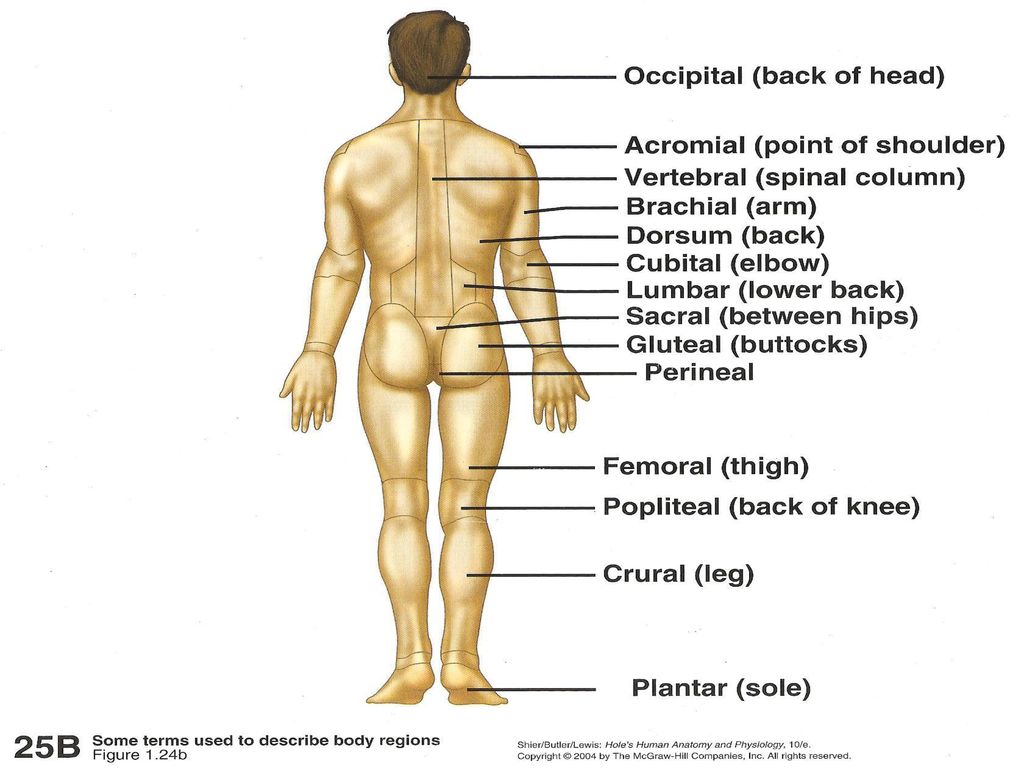
Post a Comment for "44 label the regions of the body"